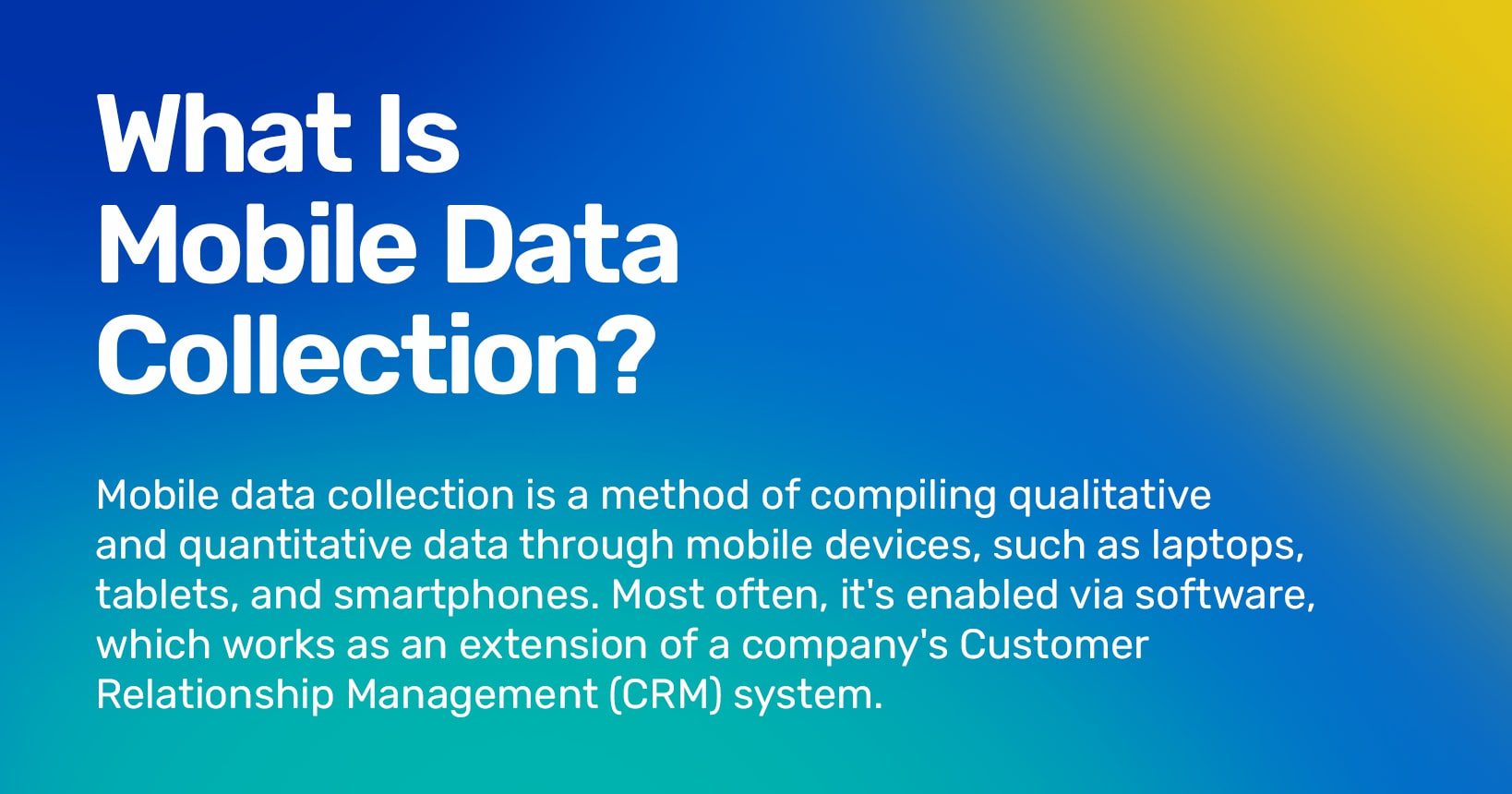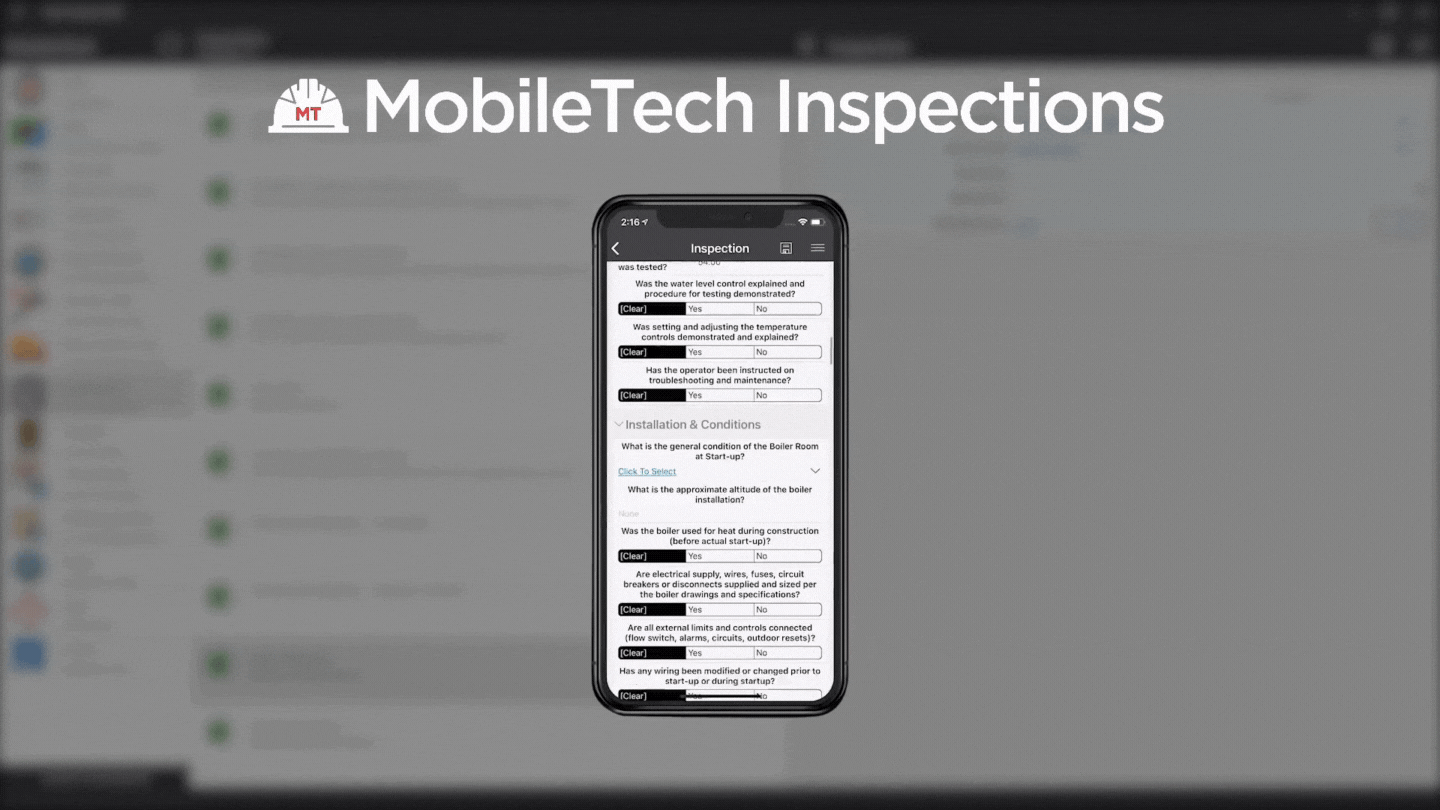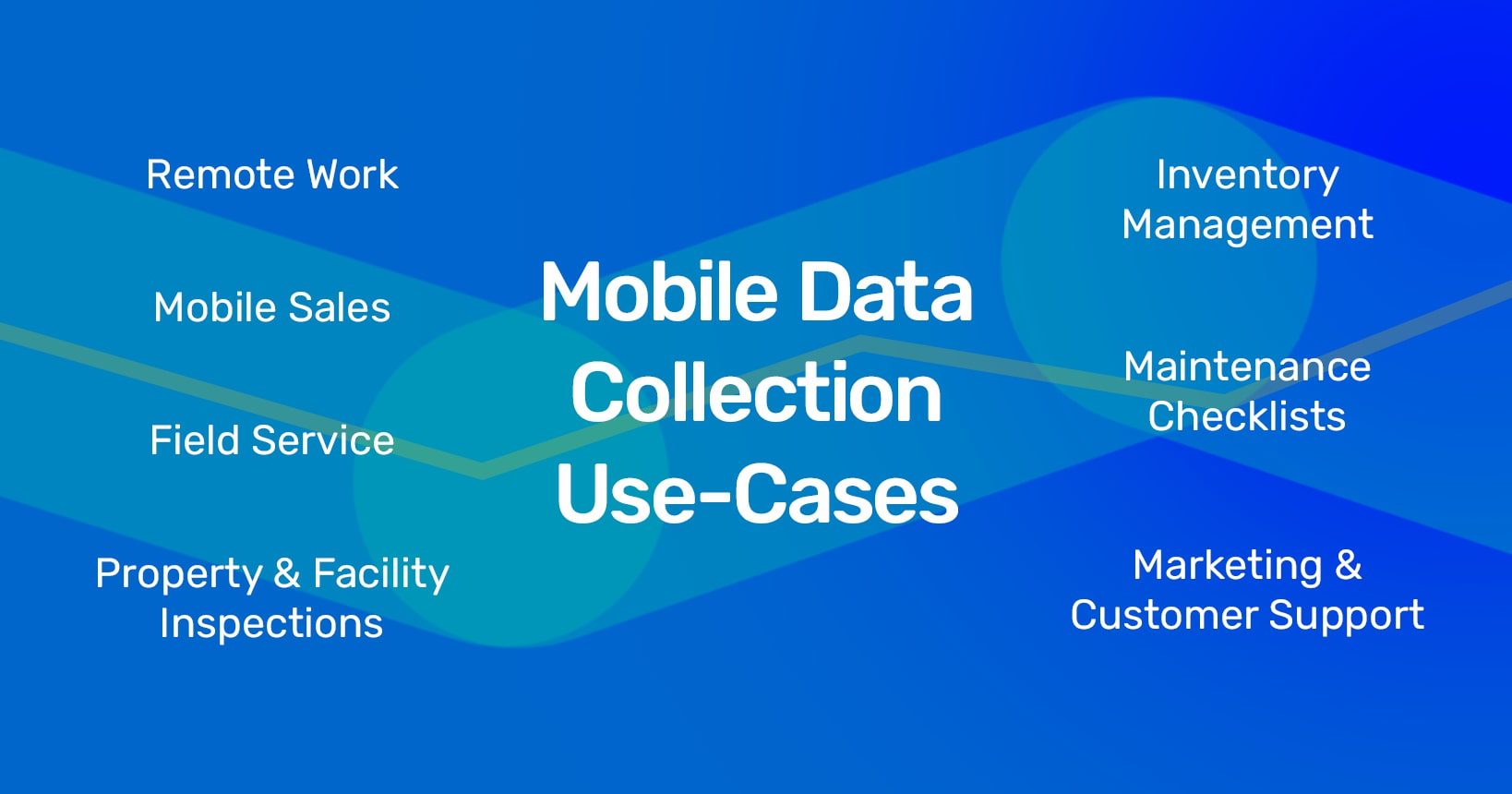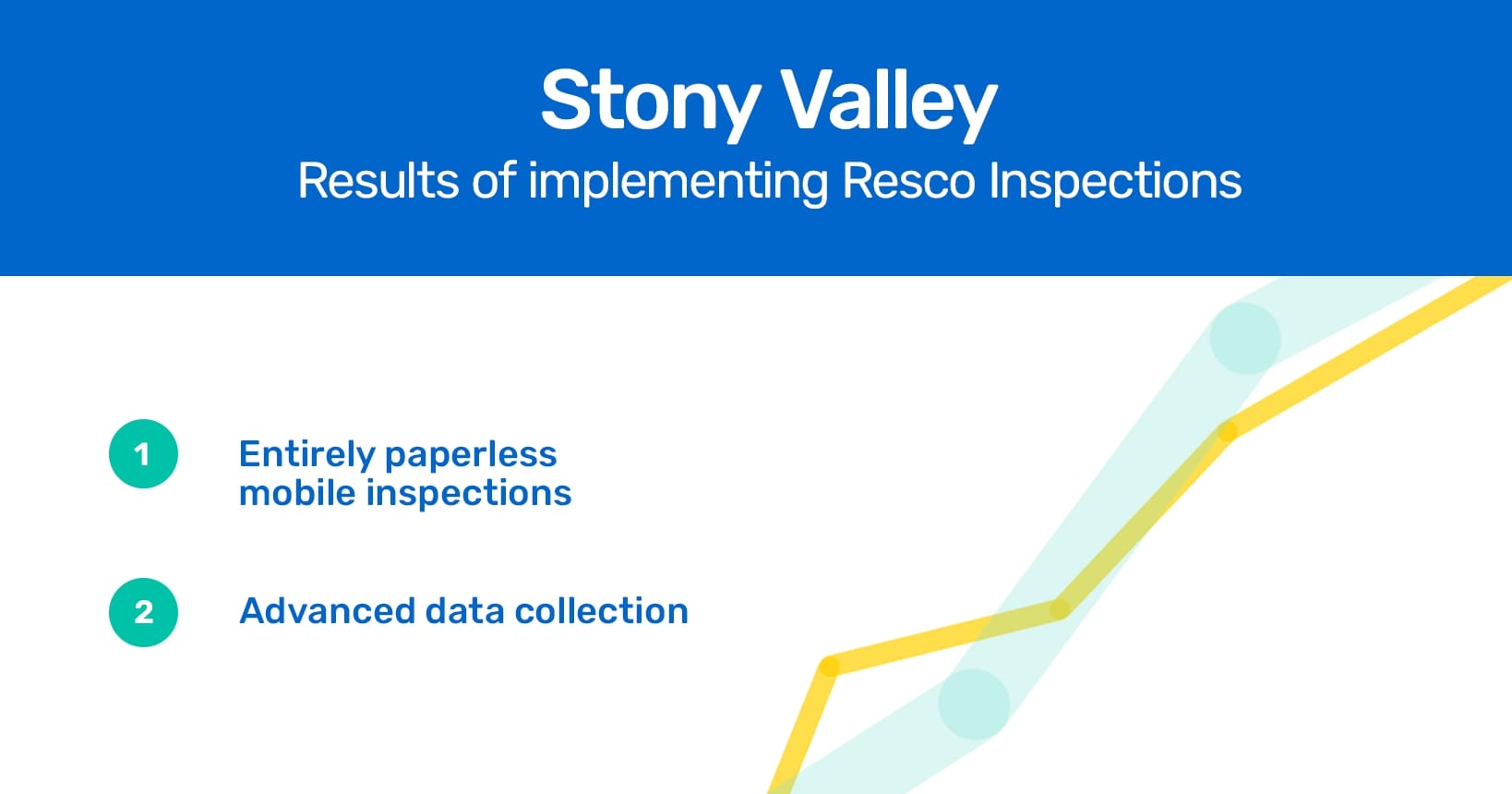It’s said money makes the world go round. And while true, in our digital age, information seems to be at least as valuable.
So, in this article, we’ll discuss how you can use your deskless workforce to generate relevant data and turn it into business profit.
The topic for today is mobile data collection. Stick around to learn what it is, why it matters, and the techniques behind making it work for your benefit.
What is mobile data collection?
As the name suggests, mobile data collection is a method of compiling qualitative and quantitative data through mobile devices, such as laptops, tablets, and smartphones.
Most often, it’s enabled via software, which works as an extension of a company’s Customer Relationship Management (CRM) or Enterprise Resource Planning (ERP) systems.
Mobile Data Collection originated from a need to improve on the old paper-based data collection methods.
Modern technology is proven to improve the speed and accuracy of data collection, service delivery efficiency, and staff performance.
Mobile vs. Paper-based data collection
If you’re currently still using paper-based methods of information acquisition, you may wonder if there’s any sense in reworking your data collection process. In short, yes, but let’s see the reasons.
Paper-based data collection
The first big problem you encounter with paper is the inefficiency of the medium.
A single sheet may not cost much, but when you consider an average US office worker uses around 10,000 sheets every year, the costs quickly add up.
If you have a large mobile workforce, it may be difficult to provide them with the necessary data collection resources. Furthermore, paper is not well-suited to the field environment since bad weather conditions can quickly ruin it.
Stony Valley, a rock & gravel aggregate company based in Alberta, Canada, has a painful experience of this.
The organization needed to reevaluate their processes when a major flood had washed away most of their paper records.
This led Stony Valley consider a paperless solution that could mitigate the chance of a complete data loss.
Speaking of, we’d be remiss, not to mention human error. People make mistakes, and filling out a survey can take several attempts or provide incorrect information.
On top of that, it takes a long time to administer it, and it’s generally ineffective.
Mobile data collection
On the other hand, mobile software is comparatively cheap in the long run. New or updated surveys and questionnaires are automatically uploaded to your deskless workers’ devices, ready to be used.
And thanks to being directly incorporated into a business’ CRM system, all the acquired information is kept up to date in a single centralized location, where everyone from the top brass to field workers can access it. Anytime.
Digital forms are also quick to fill out or edit. Organizations can even use business logic in questionnaires to dynamically adjust to the current situation in the field. And if backed up in cloud, there is minimal chance of getting them lost.
Employees can also use mobile form for guidance during tasks or ask for support with any issue they encounter, and all that in a green and ecological way.
The benefits of mobile data collection for employees & technicians
The ultimate goal of technology should be to make human beings’ lives better, easier, safer or richer. This applies to use of mobile forms too.
After all, the user adoption is going to decide about the success of fall of digitalization. And the more benefits users see in using technology, the quicker they gonna adopt it.
The main benefits of using digital data collection for employees and technicians are:
Reduced administration time
Imagine a sales representative having a business meeting with possible customer. He/she is writing down notes because doesn’t want to forget the vital information from the interview.
After the first meeting, the representative has to visit five more clients. And do the same with the notes. And at the end of the day, he/she comes home, go back to their notes, type in the meeting details into the CRM, and email that to the manager.
And this repeats every day.
The power of mobile forms is, that they can eliminate all the manual data reporting, rewriting, and reevaluating. You just type it once and sync with all integrated systems.
And this applies not just to workflows of sales representatives, but field technicians, inspectors, surveyors, and more occupations too.
Instructions always at hand
Field technicians come into various situations during a day. And for some, they cannot prepare.
One rupture of pipe in a complex machine can be a daunting challenge for junior technician. And it that case, it’s nice to have a repair manual or instructions at hand.
With paper documents that means to carry folders of sheets for many plausible situations. With mobile forms, a phone or tablet can be a storage for thousands of instruction checklists.
Digital instructions also enable easy and quick search in available documents that can save technicians a ton of nerves and enable speedy repair.
Easier health & safety compliance
Various industries are under continuous scrutiny due to potential health and safety risks inherent to its workforce.
And this brings many challenges.
Companies and their employees need to follow up-to-date regulations, apply updates, ensure accurate documentation and following labeling guidelines.
Consider the process complexity when there are nearly 1,000 OSHA standards just for 4 main categories: construction, maritime, agriculture and general industry.
Compared to paper sheets, mobile forms provide easy options to edit & update content of compliance checklists, sync them in real-time and store in one place. That eliminates the need for laborious update of paper documents and ensures all employees have up-to-date standards always at hand.
Mobile data collection use cases
There are few types of data collection methods. These include surveys, interviews, observation, questionnaires, checklists, and more.
Mobile data collection use cases include:
-
Mobile sales
Paperwork is an unfortunate requirement for sales, and it’s even more frustrating for salespeople on the road. But by incorporating digital forms into your operations, you can keep the sheet shuffling to a minimum while your employees focus on what matters most – closing deals.
-
Field service
Field service workers have to endure many harsh weather conditions while out on their assignments. And as you likely know, pens and pans don’t mix well with things like torrential rains. Digital checklists help keep your employees and their data safe and make the field service process even more efficient.
-
Property & facility inspections
Like field service, property & facility inspections require thorough reporting, which doesn’t always lend itself well to paper-based solutions. Digital checklists remove the barrier between inspectors and managers and allow the company to keep a holistic and centralized database of new and historical data on all their assets.
-
Health&Safety compliance
H&S compliance is a complex process that involves several steps and team members. You need to capture appropriate data on time, report them, analyze, and apply leanings. Creating automated data workflows can increase efficiency, save time and help you streamline the more complex safety procedures within your organization.
-
Inventory management
Tedious but critical work, inventory management often suffers from human error. Digital checklists allow employees to streamline work processes, improving efficiency and mitigating mistakes.
-
Maintenance checklists
When it comes to vital facility assets, precision and timeliness are a must. With software solutions like mobile data collection, you can stay on top of all your necessary inspections and maintenance tasks, preventing breakdowns and saving time and money.
-
Marketing & customer support
Want to take your product and services to the next level with improvements your customers really care about? Leverage mobile data collection to amass qualitative and quantitative data across your in-person customer interactions and watch your business grow.
-
Remote work
Digital forms allow deskless and remote workers to collect valuable insights anytime and anywhere.
Considerations of a mobile data collection
That’s not to say mobile data collection comes without challenges.
There are 3 main considerations organizations should evaluate:
- Integration complexity
- Offline data collection
- User adoption
Integration
One of the main considerations for implementing digital forms remain the speed and complexity of integration.
The recent survey conducted by MuleSoft confirms that. According to report, 88% of IT leaders face integration challenges that slow digital transformation,
How to mitigate the risk? Native integration, like the one of resco.Inspections with Dynamics 365 enable companies deploy new solution faster and smoother.
Offline data collection
Data collection can occur in places like basements, remote areas, or dense development with limited access to an internet connection.
And these locations are where spreadsheets, databases, or online apps lose many of their powers.
In the end, complex offline scenarios are one of the reasons some industries has a reputation for being slow to adopt new technologies.
Therefore a solution with full offline functionality, that allows data pre-download and sync customization is beneficial.
User adoption
Digitalization requires a degree of digital literacy and initial training on the employee’s part. Because the user adoption will be deciding factor in the success of implementing a new digital tool.
As Victor Marbach, a Digital Journey Manager at DERBIGUM, says, one of the challenges is to convince people to use the product at the first place.
But a great user interface and clear benefits of digital tools can surely reduce the hesitation.

Therefore, you should always consider user experience as an important factor shaping a success of digitalization.
Mobile data collection examples
1) Mobile sales in manufacturing industry – Southern States Toyotalift
Southern States Toyotalift is a full-service distributor of high-quality heavy machinery, including forklifts, reach trucks, pallet jacks, and more. However, despite its stellar reputation, the company faced a significant challenge in the digital age – the majority of its revenue comes from direct offline sales.
A few years prior, Southern States Toyotalift integrated mobile CRM solution so they could leverage their CRM even on the road and work with essential information even in offline scenarios. To streamline order management in the field further and eliminate the need for pen and paper, they also started to use mobile forms.
And the results?
- 45% efficiency increase, which shortened a half-hour operation to 4 minutes.
- Increase in revenue by $350k month over month.
- Standardized data collection, resulting in lower costs and optimized workflows.
2) Field service in construction – Stony Valley
Stony Valley is a rock and gravel aggregate company based in Canada. As is the case with many construction companies, Stony Valley’s employees often have to deal with harsh conditions in the field. And although they may be well-prepared for the treacherous weather, their data collection wasn’t.
Originally, the company collected data with over 20 paper forms, making for an inefficient and frustrating process on all sides. Furthermore, the real dangers of this approach revealed themselves when a flash flood washed away most of their paper-based records.
To solve the issue, Stony Valley chose to integrate a mobile solution. Here are some of the benefits they enjoyed as a consequence.
- Entirely paperless mobile inspections, with the 20+ paper forms transformed into efficient and easy-to-use digital mobile forms.
- Advanced data collection allows for adding photos, signatures, and more.
3) Customers visits in maintenance –
Unica Group, a leading technical service provider in the Netherlands, faced a common challenge: disparate inspection processes across its forty operating companies. This diversity led to inefficiencies and inconsistencies in reporting.
Turning to Resco’s mobile data collection, Unica Group standardized its inspection processes, eliminating the need for multiple document formats. With the customizable interface, they quickly implemented the solution and streamlined their workflows.
Key benefits:
- Standardized forms: One form for the entire business ensures consistency and quality.
- Offline functionality: Resco’s offline capabilities enable inspections anywhere, even without internet access.
- Time savings: Inspection time and report creation reduced by approximately 30%, boosting efficiency.
- Legal compliance: Digital inspections help meet legal requirements and provides proof of correct installations.
- Centralized oversight: A centralized view of all inspections ensures adherence to standards and provides valuable insights.
Thanks to mobile data collection, Unica Group has achieved significant time savings and improved compliance. With a company-wide minimum quality standard, they’re better equipped to meet regulatory requirements and customer expectations.
How to start with mobile data collection
Want to enjoy similar benefits? You can now try resco.Inspections completely free or request a demo and see what mobile forms can do for you.




